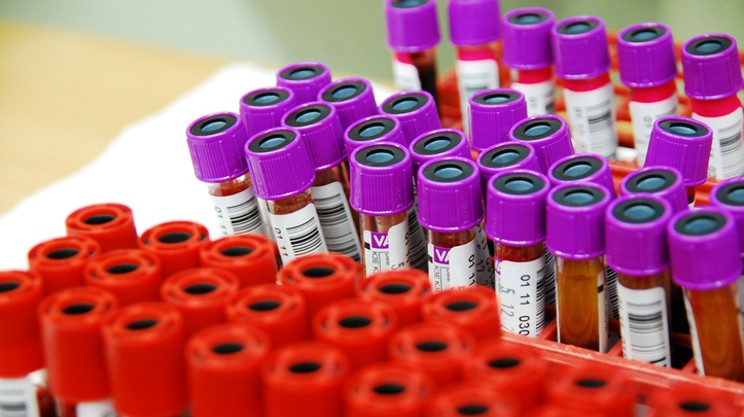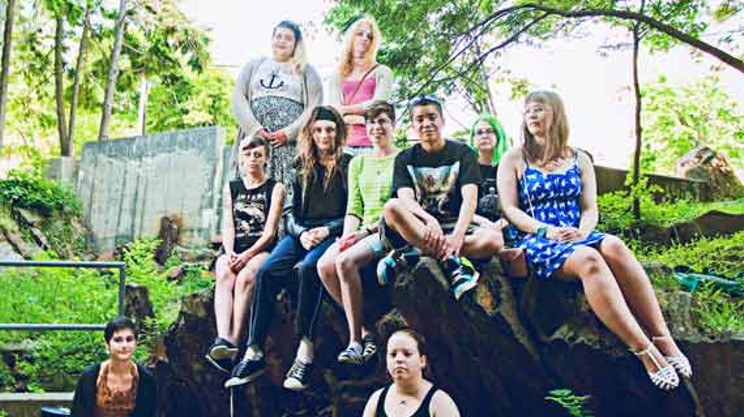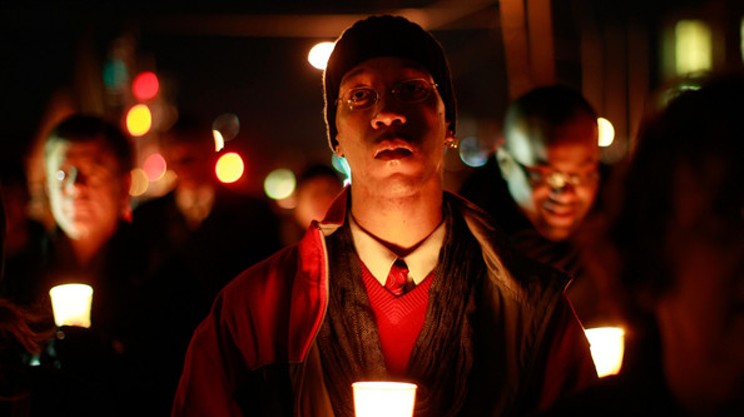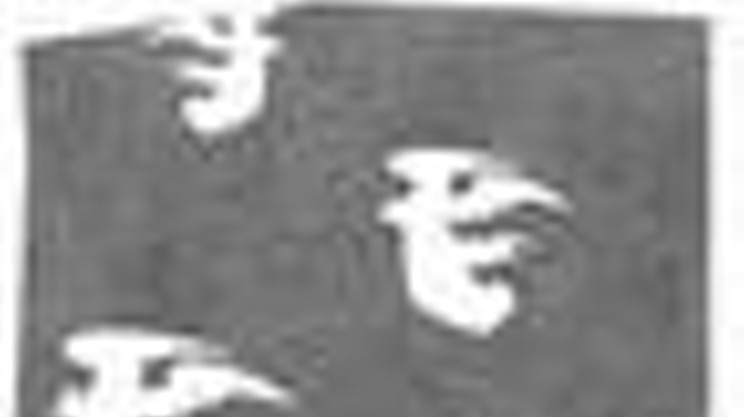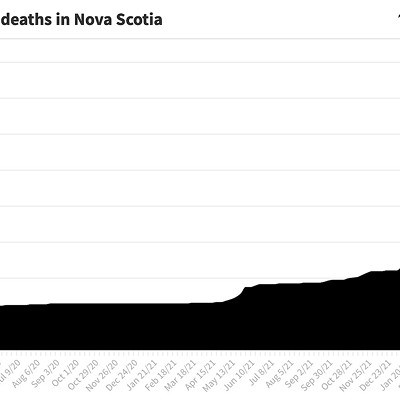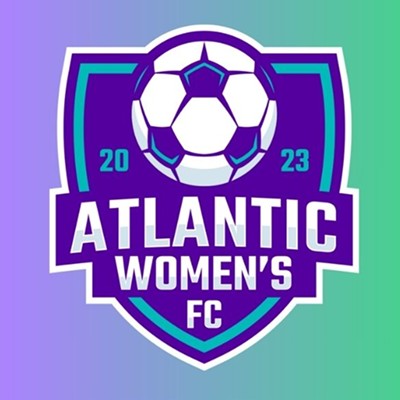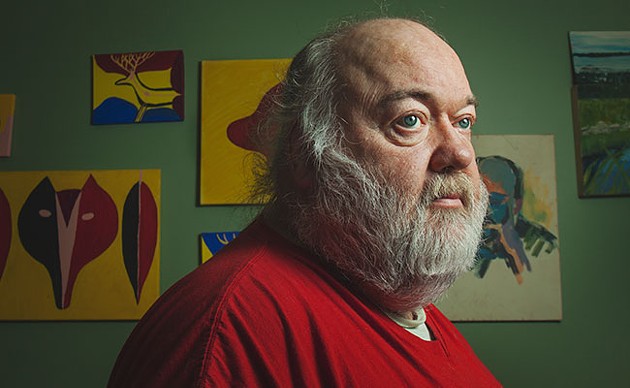
There were more people at the zombie walk last year than the AIDS walk. Dressed in tattered costumes and gruesome make-up, over 100 people shambled around the downtown on September 25. Meanwhile, on the very same day at the Central Common, about 90 people (including sponsors and media) gathered together wearing red-pinned ribbons for the AIDS Coalition of Nova Scotia’s annual Walk for Life.
It’s a sharp decline from
It’s in this climate that the AIDS Coalition of Nova Scotia is trying to secure its future, and it hasn’t been easy. There have been significant staff changes and service adjustments made over the last few years. All of which has some of the AIDS Coalition’s members—people living with HIV and AIDS across the province—feeling disconnected and dissatisfied with the
Michael Parsons is 52 years old. He’s been HIV-positive for 30
“They shouldn’t even be in existence.”
Parsons is one of six former ACNS members and volunteers who’ve spoken to The Coast about what they feel are a lack of support programs and the coalition’s purposeful distancing of itself from the HIV-positive community.
“This is the
Elizabeth is in her 70s
“In a perfect world, I would like to see the ACNS run by only” people living with HIV and AIDS, she says. “I don’t think that’s ever going to happen
Aside from the discontinuation of the ACNS Health Fund a few years back—and we’ll get to that—one of the biggest problems for those speaking out has been the coalition’s weakening resolve to include people living with HIV and AIDS on the charity’s board. Fifteen years ago, that rule was strictly enforced. The board had to be 50.1 percent HIV-positive. Privacy concerns now make such a benchmark virtually impossible. The result—says Parsons—is a board who are speaking for HIV-positive people but who aren’t “living with the virus.”
All of these concerns pre-date Shannon Pringle’s tenure as executive director. Nevertheless, she’s at the helm now. Pringle was hired less than a year ago; one of three new staffers brought on at the ACNS in the last 12 months. She admits the coalition has been going through a transition but declined to comment on any funding issues, operations or complaints made about the ACNS, its work and how it spends its money.
“These issues have not been brought to me,” she says. “I have been here a short time, and if people have concerns they are most welcome to come. I’m very approachable, very easy to speak to. They’re most welcome to come and express those concerns to me.”
Subsequent questions sent last week—over email, at Pringle’s request—were not answered. In an email to The Coast, board chair Suzanne Kennedy says Pringle is “extremely busy with federal funding applications” and “cannot take the time to comprehensively respond to questions.” Kennedy says she was on vacation and unable to answer any questions herself, either. No other board members were made available for comment.
According to charitable tax returns, last fiscal year the ACNS brought in $467,595 in revenue—$140,000 of which came from donations. Total revenue has been falling slowly since 2012, but the biggest slumps have been in donations. From 2013 to 2014, non-receipted donations fell from almost $95,000 to $13,374. Fundraised money in the 2011-12 fiscal year was
Al McNutt was the ACNS board chair during those lean years. He says the reduction in cash can be attributed to how it’s become “more and more difficult” to raise money for HIV and AIDS.
“If you’re going to have a walk, you need people to walk, and it’s not an easy thing to raise money for,” he says.
The summer of 2014 was the same time the coalition suspended its Health Fund. Nova Scotians living with HIV and AIDS used to be able to access $75 every two months from the fund. It wasn’t a lot of money, but it was enough to buy vitamins or meal replacements. It was something, and for those living with the extraordinary costs of HIV medication, it meant a lot.
McNutt says it was costing “an enormous amount of money” to continue the fund at a time when fundraised dollars were low.
“We really struggled with stopping the health fund, but there was no money,” he says. “A lot of the people complaining about it [now] were not out there getting a pledge sheet and trying to raise money for that fund.”
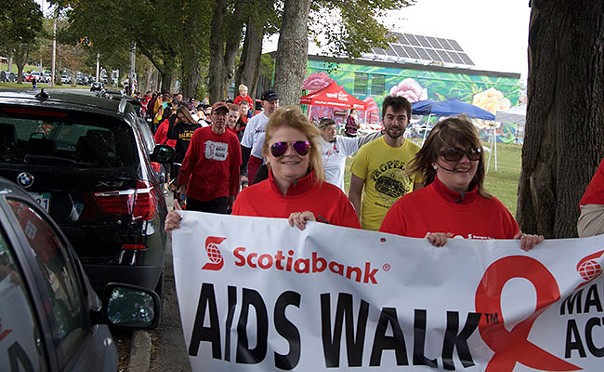
The decision left Darrell Martin “saddened and angry.” The 50-year-old New Glasgow resident has been HIV-positive for half his life. He’s a former ACNS volunteer, and his partner Eric Arbuckle is a former board member. Martin praises the coalition for how it used to offer a “safe haven” for low-income, isolated individuals living with HIV and AIDS. It’s changed since then.
“It’s just a place now—a business,” he says. “I guess the money’s just not there, and they only have enough to cover the cost of rent and to pay the people who work there. Everything has kind of gone to the wayside, and it feels like the support’s not there. It almost seems in a way like they’ve given up.”
Complaints aside, the ACNS is still active in the community. According to last year’s annual report (which, in a clerical error, was only put online earlier this week), in 2015 the coalition provided 300 referrals to other health services, 1,400 one-on-one support sessions, expanded its complimentary therapy program to include osteopathy and distributed hundreds of hygiene items through its Making Ends Meet program. It also provides a number of health education
That’s not to say there aren’t struggles. Even in the best of
The origin story is acronym-heavy but bears repeating. In 1984 the Gay Men’s Health Association of Halifax created the Metro Area Committee on AIDS (MacAIDS). A year later, MacAIDS expanded provincially and changed its name to AIDS Nova Scotia (ANS). In 1988, the Nova Scotia Persons with AIDS Coalition (NSPWAC) was created to provide advocacy and support for PHAs (People living with HIV and AIDS). In 1995, the ANS and the NSPWAC amalgamated into the ACNS in response to government regulations saying there could only be one federally backed AIDS
The shuffling around of jurisdictions and names has come back in a big way. Over the last
More than 30 percent of the AIDS
The ACNS has weathered this storm by increasing its offerings and expanding its work into Prince Edward Island. It’s even come up with a tentative new name—The Beacon: Support & Education for HIV, Hepatitis and STIs. Not the easiest acronym, but it does what it says on the tin. Support for HIV-positive people is now just one-half (of one-third) of the
The rebranding is currently on hold while Pringle finishes applying for all that federal funding she’s “extremely busy” with. But even if the cheques get written, that doesn’t mean the Health Fund is coming back. Federal money isn’t allowed to be spent on direct services. The government will fund your safe-sex or drug program, but it won’t buy any condoms or clean needles. Fundraising, for an
Last year’s charitable tax returns show the coalition has bounced back, somewhat. Fundraised revenue came in at $56,548, and the total for non-receipted donations was over $100,000. According to Pringle, funds raised from the 2016 AIDS walk held last September are still being tabulated and couldn’t be shared.
Raising money is one problem. Deciding what to spend those limited funds on is another. The debate about whether money is better used for frontline support or administration has been ongoing since Jacqueline Gahagan moved to Halifax in the early 2000s, and it’s “never been completely resolved.”“It’s just a place now—a business...It almost seems in a way like they’ve given up.” —Darrell Martin
tweet this
Gahagan is director of Dalhousie’s Gender and Health Promotion Studies unit, which researches issues around health, harm reduction and HIV/AIDS. She’s also a former ACNS board member. So knows a thing or two about the Coalition’s work. But Gahagan says there are limits to how much a charity can respond to a public health issue.
“I don’t think as a province we’re doing a very good job, and I don’t know we can necessarily say that’s attributable to how an
Public Health, she suggests, should step in to provide things like access to financial coverage for the viral-suppressing PrEP treatment and more point-of-care testing to track down the 20 percent of HIV-positive Canadians who are unaware they’re carrying the virus.
As always, the biggest problem comes down to money. Fundraisers fluctuate and government funding is hard-won. The ACNS, says Gahagan, has to be asking itself what level of survival it’s prepared to accept. What costs should be cut in order to keep offering the services that are needed by people living with HIV and AIDS?
“I’d like to say that’s the million-dollar question, but if we had a million dollars we could probably answer that one,” she says.
McNutt says the coalition is doing the best it can with what’s available. While he respects how hard it can be for other HIV-positive people like himself to “come to the table” and get involved, he wouldn’t “sit on my ass and say, ‘Somebody else
“That might sound rather harsh, but that’s reality,” he says. “If I have an axe to grind, or I have an issue, I will also have a solution.”
For some, it’s easier to just walk away. As medication has improved and HIV-positive people are living longer, there are many who don’t feel the same need for a close-knit community that formed in the wake of the AIDS crisis. Some folks just want to take their pills and live their lives.
Others don’t make it that far. Dale Haynes was diagnosed as HIV-positive in 1997. He died on December 17 at age 49, from what his family says were unrelated causes. Before his passing, Hayes visited The Coast to talk about the support the ACNS offered him.
“Really, for what they’ve done for me over the last, probably five to eight years, they could be not even in existence and I wouldn’t notice any difference,” he said.
It’s still a crisis situation out there, says Parsons. People are still dying.
His own antiretroviral drug cocktail stopped working last week. Parsons has an active viral load at work in his body right now, trying to kill him. It doesn’t change his feelings, though. He doesn’t want anything to do with the AIDS Coalition. Not anymore.
“I don’t know too many long-term survivors that would walk into the doors of ACNS,” he says, “and when you have an
The Public Health Agency of Canada estimates there are between 740 to 1,240 people living with HIV in Atlantic Canada. The numbers are too small to break down provincially.


